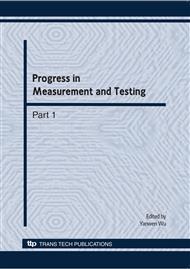p.441
p.446
p.452
p.458
p.464
p.470
p.476
p.482
p.488
Frame Coding Complexity Prediction in H.264/AVC Rate Control
Abstract:
H.264/AVC video coding standard inherited the quadratic rate-distortion model of VM8, and proposed a linear tracking model to predict Mean Absolute Difference of the current frame. Since Rate-Distortion Optimization is introduced, the frame coding complexity MAD is predicted in H.264/AVC rate control. However, any single-mode prediction approach of frame coding complexity has its shortages due to unexpected changes of video source. In this paper, we induct the frame coding complexity based on extensive experiments, and propose an optimized choice approach to predict the frame coding complexity. Simulation results demonstrate that the novel approach for frame coding complexity gains better precision than that of joint model in H.264/AVC reference software.
Info:
Periodical:
Pages:
464-469
Citation:
Online since:
May 2010
Authors:
Keywords:
Price:
Сopyright:
© 2010 Trans Tech Publications Ltd. All Rights Reserved
Share:
Citation:


